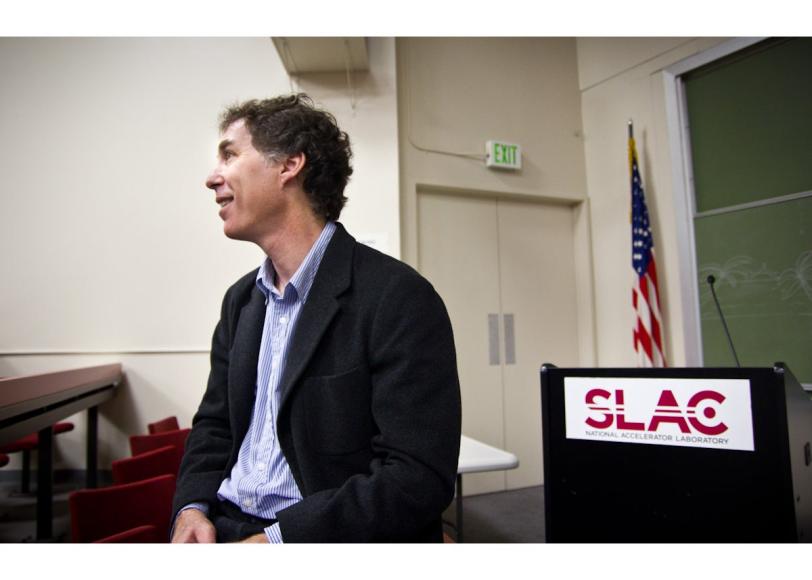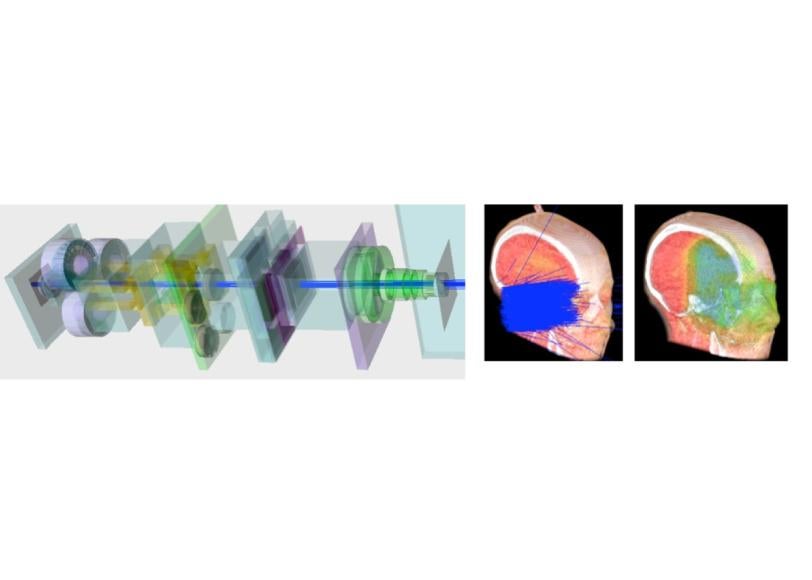SLAC Software Developer Discusses Physics Simulation Tool to Make Cancer Therapy Safer
Tiny particles are making a big difference in the world of cancer therapy. And SLAC physicists—experts in particle transport—are using computer simulations to make those therapies safer.
By Helen Shen
Tiny particles are making a big difference in the world of cancer therapy. And SLAC physicists—experts in particle transport—are using computer simulations to make those therapies safer.
At the Oct. 10 SLAC Colloquium, the lab's own Joseph Perl described how he and his colleagues are turning the simulation toolkit Geant4 into a powerful application for medical physicists. Originally designed to track subatomic particles in high-energy physics experiments, Geant4 can also map proton paths through patients' bodies during radiation treatment.
In radiation treatment, subatomic particles inflict DNA damage on dividing cells—both healthy and cancerous—causing them to commit suicide. The technique works because rapidly growing cancer cells are more likely to be dividing at any given time, and thus are more likely to be killed; but a smaller proportion of healthy cells are also susceptible to damage.
Minimizing collateral damage is a tough problem for medical physicists who design radiation treatments.
“To perfect this stuff, what we have to understand really is where are the particles going?” Perl said. “We have to understand particle transport when we're designing the medical linacs,” the accelerators that deliver the particles to patients. “We have to understand particle transport when we're talking about how the beams actually penetrate the body.”
Computer simulation tools such as EGS4, developed at SLAC in the 1970s, have helped medical physicists predict the behavior of X-rays and gamma rays. Now, Geant4 offers the ability to model proton beams, too. While Perl is SLAC's only Geant4 team member working on medical physics applications, he works with four other partners on more general Geant4 capabilities. Together they constitute the second-largest team in the international Geant4 collaboration.
In contrast to the X-ray beams used in traditional therapies, which go all the way through the body, proton beams dump their energy at a specific depth. Medical physicists can target a tumor at one depth and avoid deeper and shallower tissues by tweaking the energy levels of one or more beams. Proton beam therapy may be particularly useful in children, for whom stray radiation can stunt growth and cause secondary cancers in adulthood.
Geant 4 relies on a technique called Monte-Carlo simulation, which models each proton moving through the body in a series of random steps. At each step, the program essentially casts a die to guess where the particle will move next. Over many steps, the program shows where protons are most likely to end up.
Unlike many other tools, Geant4 can also simulate the effect of tissues, such as the rib bones, that may move in and out of the proton beam as a patient breathes. Such obstructions can block some radiation from the intended target, while simultaneously allowing some tissue to soak up unnecessary radiation. Geant4 can potentially help medical physicists program beams to track a moving target and deliver a constant dosage to the tumor.
Geant4 is freely available to anyone who wants to use it, but in its current form may be challenging to some novices. “It’s a really fancy techno-Lego kit,” said Perl, but the box does not come with any ready-made toys.
To address this problem, SLAC’s Geant4 team has joined Massachusetts General Hospital and the University of California-San Francisco, in a four-year collaboration funded by the National Institutes of Health. The project, headed by Perl, will help medical physicists customize their simulations without disrupting the program’s innermost workings.
“If we can make it easier for people to use,” Perl said, “the more likely they are to use things right.”
Helen Shen is a science-communications intern at SLAC National Accelerator Laboratory.

(Photo by Helen Shen)

(Image by Jan Schuemann/TOPAS Collaboration)